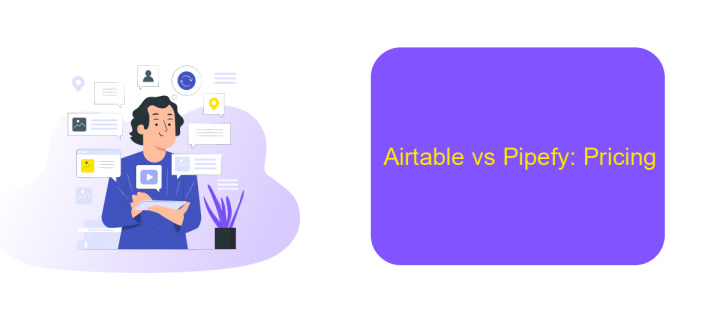Airtable Vs Pipefy
Choosing the right project management tool can significantly impact your team's productivity and efficiency. Airtable and Pipefy are two popular options that offer unique features tailored to different needs. In this article, we will compare Airtable and Pipefy, examining their strengths, weaknesses, and ideal use cases to help you make an informed decision for your organization.
What is Airtable?
Airtable is a versatile and user-friendly cloud-based platform that combines the simplicity of a spreadsheet with the power of a database. It allows users to organize and manage data in a highly customizable and visually appealing manner. Whether you're tracking projects, managing customer relationships, or planning events, Airtable provides the tools to streamline your workflows.
- Customizable templates
- Real-time collaboration
- Integration with various apps and services
- Advanced filtering and sorting options
- Rich field types (attachments, checkboxes, links, etc.)
One of Airtable's standout features is its ability to integrate with other tools and services, enhancing its functionality and flexibility. For example, ApiX-Drive can be used to automate data transfers between Airtable and other platforms, ensuring seamless workflows and saving time on manual data entry. With Airtable, users can create a centralized hub for their data, making it easier to access, share, and analyze information.
What is Pipefy?

Pipefy is a cloud-based workflow management tool designed to streamline and automate business processes. It offers a visual interface where users can create, customize, and manage workflows without needing extensive technical knowledge. With Pipefy, teams can collaborate more efficiently, track progress in real-time, and ensure that all tasks are completed on time. The platform supports a wide range of use cases, from project management and customer support to HR and finance operations, making it a versatile solution for businesses of all sizes.
One of the key features of Pipefy is its ability to integrate with other tools and services, enhancing its functionality and allowing seamless data flow between different systems. For instance, using integration services like ApiX-Drive, users can easily connect Pipefy with their CRM, email marketing platforms, and other essential business applications. This integration capability helps businesses automate routine tasks, reduce manual errors, and improve overall productivity. Additionally, Pipefy offers robust reporting and analytics features, enabling users to gain valuable insights and make data-driven decisions.
Airtable vs Pipefy: Key Features

When comparing Airtable and Pipefy, it's essential to consider the key features each platform offers to determine which one best suits your needs. Both tools are designed to streamline workflows, but they have unique strengths.
- Customization: Airtable provides highly customizable templates and allows users to create their own databases, while Pipefy focuses on pre-built process templates.
- Integration: Airtable offers robust integration capabilities with various apps, including a seamless connection with ApiX-Drive for automated workflows. Pipefy also supports integrations but may require more manual setup.
- User Interface: Airtable features a spreadsheet-like interface that is intuitive and easy to use. Pipefy, on the other hand, offers a more structured, card-based interface ideal for managing processes.
- Collaboration: Both platforms support team collaboration, but Airtable's real-time editing and commenting features provide a more dynamic collaborative environment.
- Automation: Pipefy excels in process automation, offering a range of built-in automation options. Airtable also supports automation but relies more on third-party tools like ApiX-Drive for advanced workflows.
In summary, Airtable is ideal for users who need a flexible and customizable database solution with strong integration capabilities. Pipefy is better suited for those who require a structured approach to process management with robust automation features. Consider your specific workflow requirements to choose the best tool for your organization.
Airtable vs Pipefy: Pricing

When comparing Airtable and Pipefy in terms of pricing, it's essential to understand the different plans and features each platform offers. Airtable provides a range of pricing options starting with a free plan that includes basic features suitable for individuals and small teams. As you move up to the Plus, Pro, and Enterprise plans, the cost increases, but so do the advanced features and capabilities.
On the other hand, Pipefy offers a free plan for basic use, but their pricing structure is more tailored toward businesses and enterprises. Pipefy's paid plans include the Business and Enterprise options, which offer more extensive features and customization options for larger teams and complex workflows.
- Airtable Free Plan: Basic features, limited records and attachments.
- Airtable Plus Plan: /user/month, additional records and features.
- Airtable Pro Plan: /user/month, advanced features and integrations.
- Pipefy Free Plan: Basic features, limited tasks and automations.
- Pipefy Business Plan: /user/month, enhanced features and customization.
- Pipefy Enterprise Plan: Custom pricing, tailored for large organizations.
Both Airtable and Pipefy offer scalable options to fit different business needs. For seamless integration with other tools and services, platforms like ApiX-Drive can be used to automate workflows and enhance productivity. Ultimately, the choice between Airtable and Pipefy will depend on your specific requirements and budget.
Airtable vs Pipefy: Pros and Cons
Airtable offers a highly flexible and user-friendly interface, making it easy for teams to organize and manage their workflows. Its strength lies in its powerful database capabilities, which allow for extensive customization and data manipulation. However, Airtable can be complex for users unfamiliar with database management, and its advanced features may come at a higher cost. Integration with other tools is seamless, especially with services like ApiX-Drive, which streamline the process of connecting Airtable to various applications.
Pipefy, on the other hand, excels in process management and automation. It provides a structured approach to workflow management, making it ideal for teams looking to standardize their operations. Pipefy's intuitive interface and pre-built templates simplify the setup process. However, it may lack the same level of customization that Airtable offers. While Pipefy also supports integrations, it may require additional tools or services, such as ApiX-Drive, to achieve the desired connectivity with other applications.
- Automate the work of an online store or landing
- Empower through integration
- Don't spend money on programmers and integrators
- Save time by automating routine tasks
FAQ
What are the main differences between Airtable and Pipefy?
Which tool is better for project management?
Can Airtable and Pipefy integrate with other tools?
Which platform is more user-friendly?
How do I choose between Airtable and Pipefy for my business needs?
Apix-Drive will help optimize business processes, save you from a lot of routine tasks and unnecessary costs for automation, attracting additional specialists. Try setting up a free test connection with ApiX-Drive and see for yourself. Now you have to think about where to invest the freed time and money!


